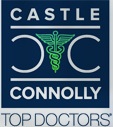
The anterior cruciate ligament (ACL) is a crucial ligament extending from the femur to the tibia to help stabilize the knee during abrupt changes in direction or speed. Overstretching this ligament is common and can result in ACL injuries with a wide range of severity. Understanding the severity of your injury is essential to implement the appropriate treatment in a timely manner and avoid further injury.
Recognizing when you are injured is the first step to seeking treatment for an ACL injury. Here are the most common symptoms and indicators of an ACL tear:
- Knee instability
- Knee pain/stiffness
- Knee swelling
- A "pop" in the knee at the time of injury
Once you are able to identify these symptoms, medical attention should be sought out immediately. Your physician will perform a medical diagnosis based on your symptom's severity and medical history. If your injury is minor, a physician may recommend non-surgical treatment such as the RICE method, physical therapy, or regenerative medicine. More severe ACL tears likely require surgery to avoid further damage.
If your injury is left untreated, your ACL tear will likely worsen and even lead to other injuries such as a meniscal injury, additional cartilage damage, or osteoarthritis. Thus, it is vital that you seek immediate treatment to ensure a full and healthy recovery.
If you think you have sustained an ACL injury, reach out to your physician for a medical examination today!
Dr. Yaser A. Metwally is board-certified by both the American Board of Orthopedic Surgery and the Royal College of Surgeons of Canada. He received his fellowship of Reconstructive Surgery from the Mayo Clinic in Rochester, Minnesota and specializes in hip and knee replacement surgery.




 Book an Appointment
Book an Appointment
 Patient Portal
Patient Portal
